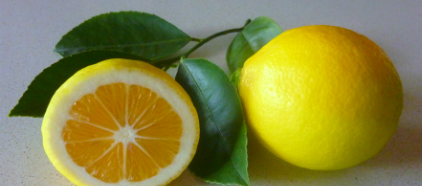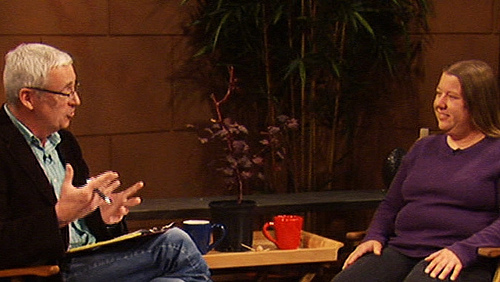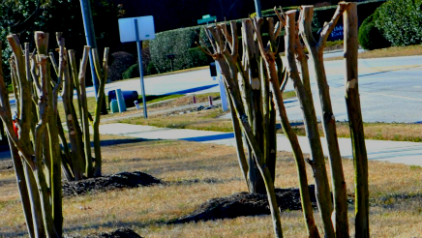Failure is part of the life of being a gardener. But each time we up-
root a fern that's been fried in the sun, or an olive tree that's looking
sad in partial shade… we learn something. Below is a list of garden-
ing mistakes based on many years of my experiences, and my obser-
vations of others around me.
(Full confession: as a plant collector with little sun, I tend to repeat
numbers 2, 3 and 9 at my own house more than I would like to admit!)
_____________________________________________________
1. Unfamiliarity with your soil type. Our land is divided by the Bal-
cones Escarpment, a line conveniently marked by I-35. Put simply –
if you live east of the interstate your soil is clay, and to the west it's
rock and caliche.
There are however pockets on both sides that will have rock, clay,
caliche or some unholy combination of all three, just to confuse
things! We mostly have alkaline soil and water. It's critical that you
know what you’re dealing with, before you buy a bunch of trees and
can’t chip out a hole for them; or if you put in xeric plants that require
good drainage and you then have to watch them rot in your un-amen-
ded clay soil.
_____________________________________________________
2. Planting for the incorrect part of the state. If a plant flourishes in
Houston, this does not mean it's going to be happy in the Travis Co.
area. Between our soil, and with rain averaging 25 to 30 inches a
year, mid-level humidity with temps in the 100s in summer, and a
tendency to freeze when your least expecting it, Austin is a bit more
temperamental than Dallas or San Antonio. Do the research and stick
with plants that are known to do well here.
_____________________________________________________
3. Overplanting and overcrowding. It's hard to remember when you
plant a new rosemary bush that it could grow to be 6’ wide. Plants
with proper spacing and airflow can fend off disease, are less stressed
and compete less for water. To fill in those holes, consider annual
color that can be replaced seasonally.
_____________________________________________________
4. Incorrect pruning techniques. Any time you prune a plant, you
are sending a signal that new growth should begin. New growth is
more sensitive to cold and heat than normal, so if you prune too
soon in spring or too late in the fall you could lose what would nor-
mally be a hardy plant just because the timing of your pruning was
off.
It is also a mistake to over-prune shrubs and trees. Regrettably some
gardeners go for a hard prune on the unfortunate crape myrtles. (See
photo above.) Known to some as 'crape murder,' this is where the
tree is constantly topped, causing smaller and weaker branches to
grow out of the top of the tree each spring giving the tree a sort of
craggy pom-pom look. Be kind to your crapes!
_____________________________________________________
5. Underestimation of maintenance time for a new garden look. Re-
moving all grass and going heavily xeric with granite and native
plants is an effective water-saving idea. However it can take more
time to look after and maintain than mowing your yard once a week.
Know what you're jumping into before you make a hard turn to a
new style of landscaping.
_____________________________________________________
6. Planting the wrong variety. One example is buying a peach tree
that may not have the right chilling hours (number of hours below
45 degrees) for the Hays county area. Your phone is a good tool for
researching on the go.
_____________________________________________________
7. Use of poor quality potting soil and fertilizers. The right materials
will make your job as a gardener seem almost easy. If you aren’t sure
about a new product, set up an experiment with a few inexpensive
annual plants in pots using your old routine as the control and see
which works best.
_____________________________________________________
8. Thinking we live in the Mediterranean. This one got us this year.
We tend to get used to the warmer winters and forget that we get
walloped every 7-10 years. We then lose many of those plants we
take for granted, like Pride of Barbados and Meyer lemon trees.
Know which plants you have that are 'on the fence' and be prepar-
ed to take extra precautions, such as Christmas lights and frost
cover. I realize this advice is 'too little too late' this year so it’s here
to file away for later.
_____________________________________________________
9. Giving plants the wrong amounts of shade or sun. I sometimes
make this mistake, trying to force a plant to grow where I want it
at my house . . . rather than where it would do best.
_____________________________________________________
10. Believing we are guaranteed success with all of our plant choices.
This goes back to the subject of failure, and the idea that we are a
trial and error landscaping region. Too many variables from yard to
yard and gardener to gardener create situations where new trans-
plants and new gardeners give up too fast when something fails.
Hang in there gardeners, and learn from your mistakes. Happy Gar-
dening Everyone!





